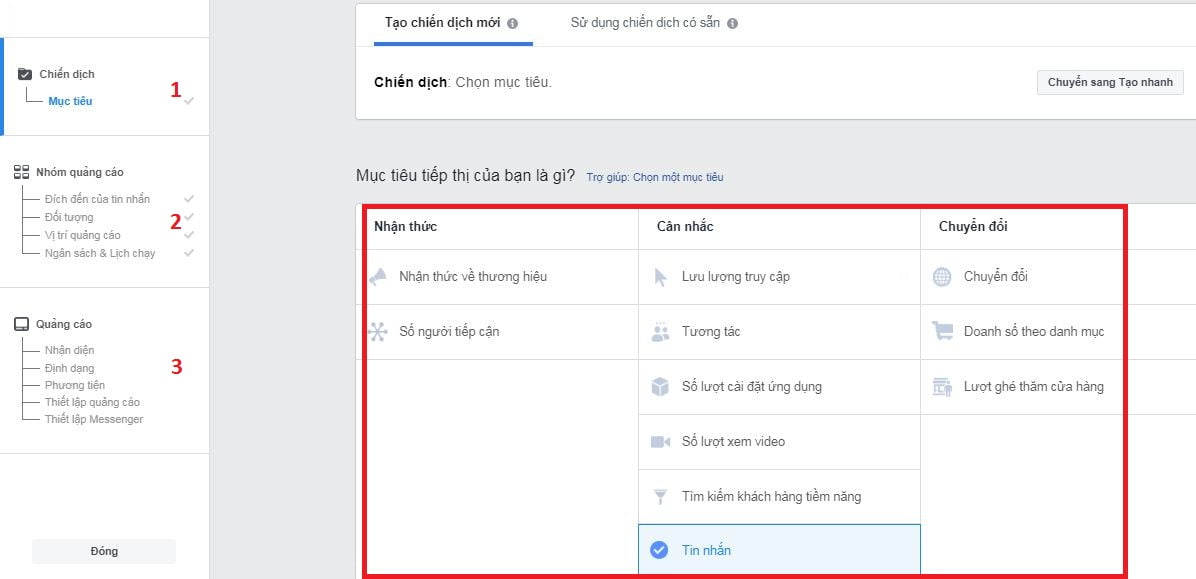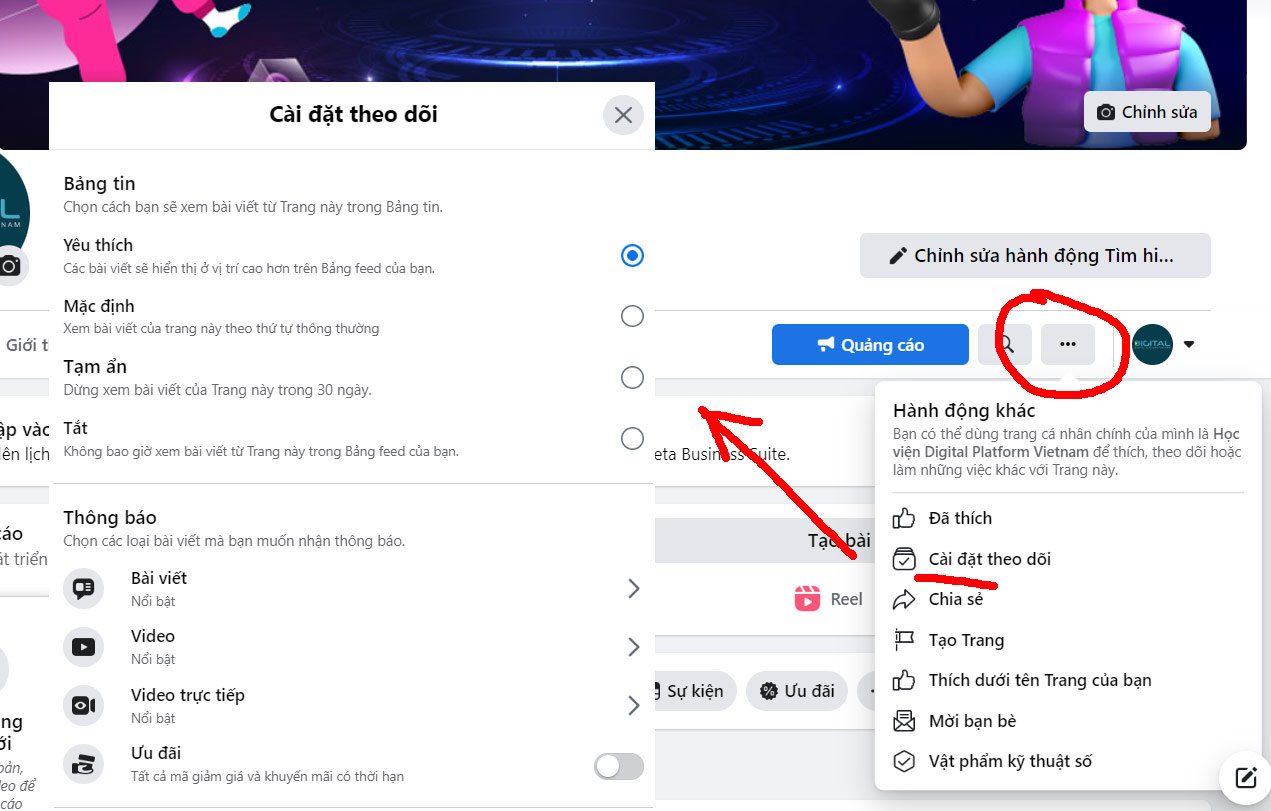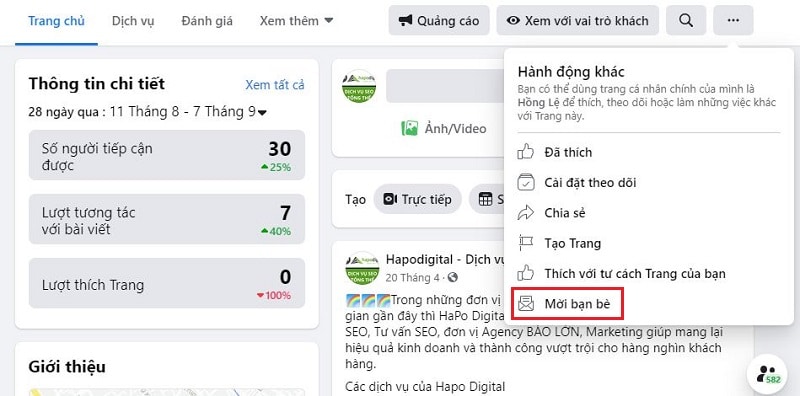Post map
ToggleFor business marketing strategies, Facebook advertising has become one of the most important tools for businesses to reach potential customers, expand their brand and boost sales. However, for an advertising campaign to be truly effective, businesses not only need attractive content but also need to set up Facebook advertising performance goals accurately. In this article, SOC LUA will analyze in detail the concept of performance goal Facebook ads, their importance, how to choose the right objectives and optimization strategies to bring the best results.
What is performance goal Facebook ads?

What are advertising objectives?
In Facebook’s advertising system, every campaign starts with choosing an objective. Objectives are the directions businesses want to achieve from advertising activities, such as increasing brand awareness, attracting potential customers, or driving sales.
Among them, performance goal Facebook ads focus on measurable outcomes, often linked to user behavior such as clicks, conversions, lead submissions, or direct revenue from orders. This differs from awareness or engagement objectives, which are typically geared toward long-term brand building.
Why is it important to define performance goals?
Defining the right performance goal not only helps businesses track results clearly but also optimizes budget allocation. Once you know exactly what you want to achieve, Facebook’s algorithm will distribute ads to the groups of users most likely to take that action. This both saves costs and increases the success rate of the campaign.
Common types of performance goal Facebook ads
Traffic goal
This is a suitable option if a business wants to drive users to a website, landing page, or app. When setting this goal, Facebook will show ads to people more likely to click on links. This goal is often used to generate initial website traffic, attract new customers, or introduce products and services.
Lead generation goal
For businesses in the Business to Business (B2B) or service sectors, collecting potential customer information is crucial. With this goal, Facebook allows you to create registration forms directly on the platform, making it easy for users to leave their email, phone number, or contact details. This is an effective way to build a high-quality customer list, supporting remarketing or long-term nurturing strategies.
Conversion goal
The conversion goal is considered the “pinnacle” of the performance goal Facebook ads system. It aims to get users to perform the most valuable actions, such as making a purchase, subscribing to a service, or completing an online payment. Businesses can install Facebook Pixel to track and measure each conversion accurately, thereby optimizing ads based on real data.
Sales goal
This is a specific choice for e-commerce stores. When setting a sales goal, Facebook will show ads to customers who are more likely to shop online and complete purchases. Moreover, the system allows businesses to connect directly with their product catalog, displaying dynamic ads tailored to each user’s shopping behavior.
How to choose the right performance goal Facebook ads?

Define the stage of the campaign
Not every business should run ads aiming for conversions right from the start. If the brand is new and customers are not familiar with the product, the initial goals should focus on driving traffic or increasing engagement. Once the brand has gained some recognition, you can then shift to conversion or sales goals.
Consider industry specifics
Each industry has its own characteristics, so performance goals will differ. For example, the real estate industry often prioritizes lead generation to capture interested prospects, while the fashion industry focuses more on direct sales goals. Understanding industry specifics helps businesses choose suitable objectives and avoid wasting budget.
Base on budget and timeline
Campaigns with limited budgets often struggle to achieve sales goals immediately. Instead, businesses can start with traffic or engagement goals to test the market, then gradually scale up once accurate data is available. On the other hand, with a larger budget, setting conversion goals from the start can shorten the time to reach quality prospects.
Strategies to optimize performance goal Facebook ads
Use Facebook Pixel and Conversion API
The Pixel is a tool that tracks user behavior on websites, providing data for Facebook to distribute ads more intelligently. Combined with the Conversion API, businesses can minimize data loss caused by privacy changes and ensure more accurate measurement. This is an essential foundation for optimizing performance goals.
A/B testing to optimize budget
One common mistake is running ads with only one version. To achieve higher efficiency, businesses should conduct A/B testing with different ad variations in terms of content, visuals, formats, or audience segments. The system will automatically select the most effective option, increasing performance and lowering the cost per result.
Remarketing to boost conversions
Customers often need multiple touchpoints before making a purchase decision. Therefore, remarketing strategies are indispensable. By showing ads to users who have previously visited the website or interacted with the fanpage, businesses can encourage them to return and complete desired actions, thereby improving performance goal effectiveness.
Continuous monitoring and analysis
Facebook advertising is not a “set it and forget it” activity. To optimize performance goals, businesses must regularly monitor metrics, analyze customer behavior, and make timely adjustments. Data-driven decision-making helps campaigns become increasingly effective and deliver sustainable results.
Performance goal Facebook ads are the key for businesses to define, execute, and optimize their entire digital marketing campaigns. Choosing the right goals not only directly impacts short-term results but also determines the long-term sustainability of the brand. After reading this article, we hope you can utilize these information to optimize and increase performance of your ads campaign.
Frequently Asked Questions
Có. Dù ngân sách hạn chế, việc đặt mục tiêu hiệu suất giúp doanh nghiệp phân bổ chi phí hiệu quả hơn và tiếp cận đúng nhóm khách hàng tiềm năng.
Nếu thương hiệu mới, bạn nên chọn mục tiêu lưu lượng truy cập hoặc tương tác để tạo nền tảng nhận diện. Khi đã có khách hàng quan tâm, hãy chuyển sang mục tiêu chuyển đổi hoặc doanh số.



